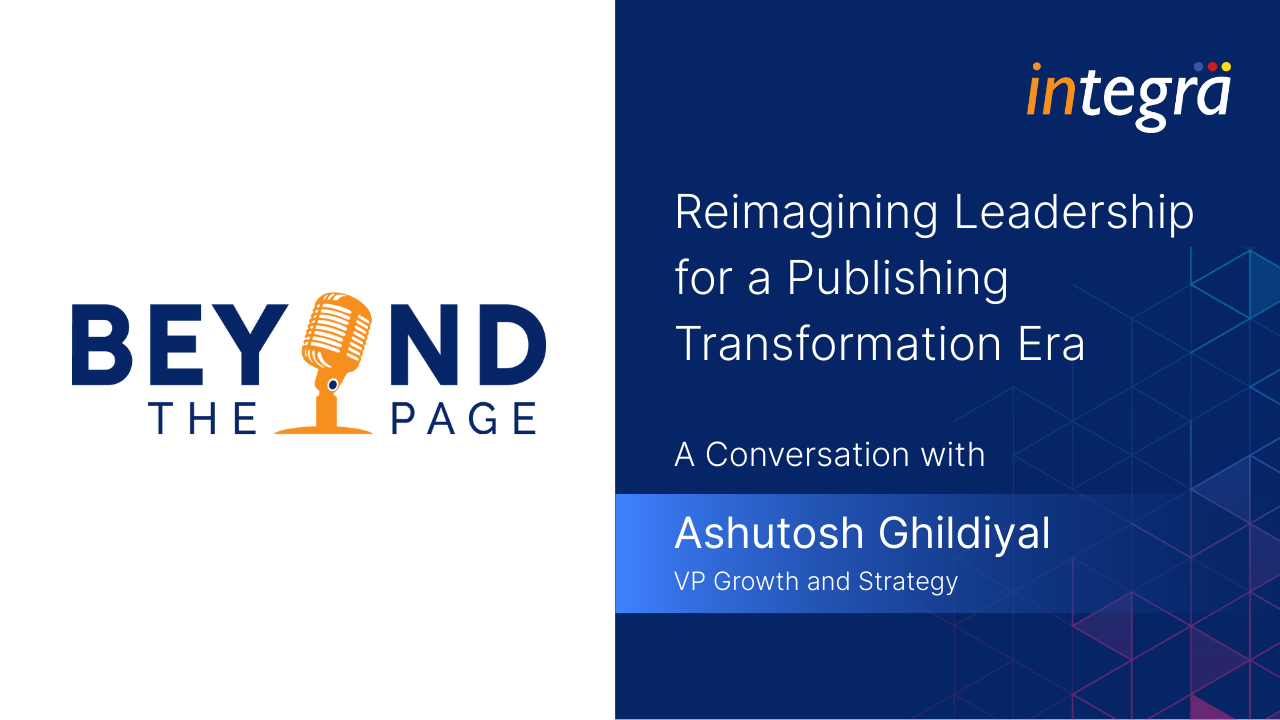
For years, assessment models have revolved around essays, standardized tests, and written exams—formats designed for an era when text was the primary mode of academic communication. But today’s students’ express ideas through videos, infographics, podcasts, and interactive projects, leveraging digital tools that weren’t even conceivable when most assessment frameworks were designed.
This growing gap between how students communicate and how they are assessed is becoming harder to ignore. Majority of educators believe traditional exams fail to measure creativity and problem-solving, two of the most critical skills for today’s workforce. Meanwhile, Pearson’s AI research highlights that students using multi-modal AI tools are far more likely to engage in higher-order thinking, such as evaluation and synthesis, compared to those relying solely on conventional study methods. The shift toward multi-modal rubrics powered by AI offers a way forward.
By leveraging insights from Cambridge’s Striking the Balance report, Pearson’s AI Perception and Usage Report, and OCR’s latest findings on assessment trends, this article explores how AI-driven frameworks can help publishers, assessment leaders, and curriculum specialists modernize evaluation models for a more dynamic, skill-based education system.
What Are Multi-Modal Rubrics?
For years, assessment systems have privileged the written word—essays, short responses, and standardized tests. But learning today is no longer confined to text. Students present research through infographics, produce video essays, collaborate on digital whiteboards, and build interactive projects—yet grading models haven’t kept pace with this shift.
This is where multi-modal rubrics come in. Instead of applying one-size-fits-all grading criteria, these rubrics allow educators to evaluate diverse formats—written, spoken, visual, and digital—using a consistent, structured approach.
A well-designed multi-modal rubric focuses on three key areas:
- Assessment Criteria: Clearly defining competencies like argument strength, coherence, or technical execution across formats.
- Quality Measurement: Ensuring evaluation remains consistent yet flexible—for example, an essay might be judged on structure and argument clarity, while a video presentation is assessed on engagement and delivery.
- Fairness & Standardization: AI-driven rubrics help reduce grading bias by applying uniform scoring metrics, ensuring that different submission formats are evaluated equitably.
For assessment leaders, curriculum designers, and publishers, this shift isn’t just theoretical but is an urgent response to an education landscape where text is no longer the default medium for learning.
Why Now? The Shift Toward Multi-Modal Learning
Assessment has always been about measuring learning, but the ways students demonstrate knowledge have changed. While text-based exams once served as a universal benchmark, they no longer capture the full range of cognitive and communication skills required in today’s world. Students now work across multiple formats—presenting research through infographics, analyzing data in interactive reports, and articulating arguments in video essays—yet most assessment models remain rooted in written responses.
This gap is becoming more apparent. Pearson’s 2024 study found that students using AI-driven study tools were four times more likely to engage in higher-order cognitive processes like analysis, evaluation, and synthesis compared to those relying solely on conventional study methods. At the same time, advancements in speech-to-text grading, AI-assisted scoring, and automated visual analysis are making it possible to assess a broader range of student work with greater consistency and scalability.
As assessment models evolve, the question is no longer whether multi-modal rubrics should be adopted, but how to ensure their validity, reliability, and fairness at scale. Institutions are already moving toward more dynamic evaluation methods that prioritize the ability to construct and communicate ideas across multiple formats. The challenge now is implementing these shifts in ways that align with educational standards while maintaining operational efficiency.
How AI Enhances Multi-Modal Rubrics
As multi-modal learning expands, scalability, consistency, and fairness in assessment have become pressing concerns. Traditional grading depends on human evaluators, whose expertise is valuable but naturally varies across assessors. AI-driven tools offer a way to enhance objectivity, scale evaluations efficiently, and provide deeper insights into student performance. But how does AI contribute to multi-modal assessment in practical terms?
AI brings objectivity and efficiency to grading by analyzing various forms of student work. Here’s how:
- Evaluating Argumentation and Critical Thinking
AI’s role in grading has advanced far beyond grammar and spelling corrections. Today, models assess argument strength, coherence, and analytical depth, identifying whether a response demonstrates higher-order thinking. Research indicates that students using AI-powered assessment tools engage more frequently in evaluation and synthesis, reinforcing AI’s role in deeper learning analysis.
- Speech and Presentation Evaluation
Oral communication is an essential skill, yet traditional grading methods for presentations often lack consistency. AI-powered speech analysis evaluates fluency, pronunciation, tone, and delivery, offering structured feedback that aligns with standardized assessment criteria. These capabilities are already in use in language proficiency exams and are being adapted for broader academic and professional evaluations.
- Visual and Digital Content Evaluation
Assessing infographics, data-driven reports, and interactive digital content requires a different set of evaluation criteria than text-based submissions. AI can analyze clarity, structure, and the effectiveness of data visualization, ensuring that visual communication is assessed with the same level of rigor as written work.
- Collaboration and Group Work Assessment
Group projects have long been difficult to assess objectively. AI-driven tools track individual contributions in platforms like Google Docs and Slack, providing quantifiable insights into participation and engagement. Instead of relying solely on peer reviews, educators can now use real-time data on collaboration dynamics to refine assessment strategies.
Key Benefits: AI-Driven Fairness and Scalability
AI has the potential to plan an increasingly strategic role in assessment, helping institutions balance efficiency, accuracy, and fairness at scale. Its benefits go beyond automation, directly addressing challenges in bias reduction, feedback speed, and large-scale grading consistency.
- Reducing Bias in Grading: Subjectivity in grading has long been a concern, particularly in writing, oral presentations, and group work assessments. AI applies standardized evaluation metrics, minimizing variability across different graders and reducing the influence of unconscious bias. However, bias in AI models themselves must also be accounted for, requiring continuous refinement of training data to ensure fair outcomes.
- Faster, More Actionable Feedback: Students benefit most when feedback is timely and targeted. AI-driven assessments provide immediate insights into strengths and areas for improvement, allowing students to refine their work before final grading. In high-stakes testing or large-scale coursework, this capability streamlines the feedback loop, ensuring that assessment isn’t just a final judgment but an ongoing learning process.
- Scalability Without Compromising Quality: Large-scale assessments have always faced a trade-off between efficiency and depth of evaluation. AI enables grading across thousands of submissions while maintaining consistency and rigor, making it a practical solution for publishers and institutions handling high-volume assessments. However, scaling AI-driven evaluation successfully depends on clear alignment with learning objectives and human oversight to address nuances that algorithms may overlook.
While AI addresses key challenges in fairness, speed, and scale, its implementation must be intentional. Institutions adopting AI-powered rubrics need to ensure transparent evaluation criteria, regular audits for bias, and integration with expert human judgment to maximize its potential.
AI in Practice: Early Adoption and Emerging Trends
AI-driven assessments are no longer theoretical. Across education, AI is helping institutions modernize evaluation methods, aligning them with real-world communication and problem-solving skills. These early implementations offer a glimpse into how AI is reshaping assessment at scale.

Case Study 1: AI-Powered Speech and Presentation Evaluation (Cambridge University Press & Assessment)
Oral assessments have long been challenging to grade consistently, particularly across diverse student populations. Cambridge University Press & Assessment has integrated AI into English language learning, using models trained on three decades of learner data to evaluate fluency, pronunciation, and coherence.
This approach ensures greater consistency in scoring, minimizing bias in pronunciation assessment. More importantly, it provides students with structured, real-time feedback, allowing them to refine their speaking skills over time—something traditional grading struggles to support.

Case Study 2: AI-Based Adaptive Testing for Personalized Assessment (Pearson+)
Fixed-question exams often fail to reflect a student’s true level of understanding. Pearson’s AI-powered adaptive testing system addresses this by dynamically adjusting question difficulty based on a student’s responses.
Research shows that students receiving AI-driven feedback are significantly more likely to engage in higher-order cognitive tasks like evaluation and synthesis. By identifying knowledge gaps in real time, adaptive assessments personalize the learning journey, ensuring students remain challenged but not overwhelmed.
Case Study 3: AI-Assisted Collaboration Assessments
Assessing teamwork has traditionally relied on peer reviews, which can be subjective and inconsistent. AI-powered tools are now tracking student participation in collaborative platforms like Google Docs and Slack, analyzing contribution patterns to generate engagement reports.
Unlike self-reported feedback, these reports offer data-driven insights into how students contribute to group work, recognizing both visible leadership roles and behind-the-scenes contributions. This approach enhances fairness in grading, ensuring teamwork assessments reflect actual engagement rather than perception.
These early applications demonstrate AI’s potential to enhance assessment across diverse learning formats. Looking ahead, the next challenge is scaling these innovations responsibly. Institutions must balance automation with human judgment, ensuring AI enhances—not replaces—expert assessment.
Challenges and Ethical Considerations
The promise of AI-driven assessment is compelling: greater efficiency, reduced bias, and the ability to evaluate diverse learning formats at scale. But as institutions move toward multi-modal rubrics, a critical question emerges—how do we implement AI responsibly?
Early adoption has already revealed significant ethical and operational challenges, from bias in scoring models to privacy concerns and the risk of over-reliance on automation. These risks don’t mean AI should be avoided, but they do require thoughtful integration strategies.
Algorithmic Bias – Who Does AI Benefit?
AI models are only as fair as the data they’re trained on. If historical biases exist in training datasets—such as underrepresenting certain dialects in speech recognition or favoring traditional academic writing styles—AI can inadvertently disadvantage some students.
A study on AI bias in education found that speech recognition tools had an 8% higher error rate for students with non-standard accents. If left unchecked, these biases could lead to systemic disadvantages in oral assessment scoring.
Mitigation Strategies:
- Bias audits should be conducted regularly to ensure training data reflects diverse student populations.
- Adopting “human-in-the-loop” approach, where AI suggestions are reviewed by educators before final grading.
Transparency – The AI Black Box Problem
One of the biggest barriers to AI adoption in assessment is lack of transparency. When an AI model flags a student’s presentation as unclear or scores an infographic lower than expected, how was that decision made?
If students and educators don’t understand why a grade was given, AI-driven assessment will struggle to gain trust. Institutions need to ensure that AI scoring models are explainable and auditable.
Mitigation Strategies:
- Explainable AI (XAI) should be a priority—grading models must show clear reasoning behind scores.
- AI-generated feedback should provide actionable insights, not just numerical scores, so students know how to improve.
Privacy and Data Security – The Cost of AI at Scale
AI-powered assessment requires large amounts of student data, from voice recordings to collaborative project logs. Without strict data governance policies, this could put student privacy at risk. Concerns are already surfacing: 55% of students worry about how their academic data is stored and used. Institutions must proactively build trust by prioritizing data security and transparency.
Mitigation Strategies:
- Adopting privacy-first AI frameworks, ensuring student data is anonymized and encrypted.
- Students must have control over their data, including options to opt out of AI-based evaluations when possible.
Over-Reliance on AI – The Role of Human Judgment in in Grading
While AI enhances assessment efficiency and fairness, it lacks the ability to fully grasp context, creativity, and nuance. A storytelling presentation, for instance, may include intentional pauses or humor—elements that an AI model might misinterpret as mistakes.
This is why AI should assist, not replace, expert judgment. A hybrid grading approach ensures that AI speeds up routine evaluation, while educators handle complex, high-stakes assessments.
Mitigation Strategies:
- Hybrid grading models should be the standard—AI should enhance evaluation, but final judgment must involve human oversight.
- Training for educators is essential—teachers and assessors need to understand when and how to override AI decisions.
Table: Summary of Risk Mitigation in AI-Powered Multi-Modal Assessment
| Challenge | Impact | Mitigation Strategies |
| Algorithmic Bias | AI may favor certain dialects or writing styles, disadvantaging some students. | Conduct bias audits and ensure diverse training data. Keep human oversight in grading. |
| Lack of Transparency | Students and teachers may not trust AI-generated scores. | Use explainable AI (XAI) to show scoring logic. Provide clear feedback beyond just a score. |
| Privacy Concerns | Student data may be misused or stored insecurely. | Apply encryption, anonymization, and allow students to opt out of AI grading. |
| Over-Reliance on AI | AI struggles with creativity and context, leading to inaccurate assessments. | Use a hybrid model where educators validate AI decisions. Train teachers in AI-assisted grading. |
| Scalability vs. Personalization | AI enables mass grading but may lack human nuance. | Ensure qualitative learning aspects remain educator-driven. Use AI for efficiency, not replacement. |
Striking the Balance: AI as an Assistant, Not a Gatekeeper
The most effective use of AI in assessment isn’t automation for the sake of efficiency, but augmentation that enhances human expertise. AI should streamline scoring consistency, scalability, and bias reduction, but the final layer of judgment must remain human—particularly for high-stakes assessments, creative work, and nuanced evaluations.
Institutions that adopt a hybrid AI-human approach will not only enhance assessment accuracy and fairness but also build confidence in AI-driven evaluations. Transparency in how AI is used, where it adds value, and when human oversight is necessary will be critical to ensuring AI serves learning objectives rather than dictating them.
To achieve this balance, assessment leaders should focus on three key areas:
- Clear AI Integration Guidelines – Define which aspects of assessment AI should handle (e.g., objective scoring, large-scale consistency) and which require human judgment (e.g., creativity, reasoning, communication skills).
- AI as Just a Decision Support Tool – AI-generated insights should inform human evaluators, providing data-backed recommendations rather than absolute decisions.
- Building Trust Through Transparency – Educators, students, and institutions need clear visibility into how AI models assess work, ensuring AI enhances, not replaces, the evaluation process.
The future of AI-driven assessment will be shaped by educationists, policy makers and assessment services organizations that get this balance right—leveraging AI’s strengths while preserving the expert judgment and adaptability that define great education.
The Future of AI-Driven Multi-Modal Assessment
AI in assessment isn’t a temporary shift—it’s redefining how learning is measured. Moving forward, AI must go beyond automation to enhance assessment depth, accessibility, and workforce alignment. Institutions that integrate AI strategically—balancing innovation with human oversight—will shape the next generation of skill-based evaluation.
Personalization at Scale
Traditional grading treats all students the same, but learning isn’t one-size-fits-all. AI will move assessments toward adaptive evaluation, where feedback is tailored based on student progress, learning patterns, and strengths. Studies show that personalized AI-driven feedback leads to greater engagement, with students showing a 32% increase in participation when receiving AI-assisted insights rather than generic comments.
- AI-powered formative assessments that dynamically adjust difficulty based on student responses.
- Personalized feedback loops, allowing students to refine their work before final grading.
Expanding Assessment Beyond Academia
Education is increasingly blurring the lines between academic and professional skill development. AI-powered multi-modal rubrics will help bridge this gap, ensuring that assessments align with industry benchmarks and real-world competencies.
- Project-based assessments will integrate AI evaluation—analyzing not just final answers but problem-solving approaches and collaboration skills.
- AI-scored video interviews and portfolio reviews will become more common, ensuring that students are assessed in ways that translate directly to the workforce.
From Black Box to Transparent System
For AI in assessment to gain widespread trust, grading models must be explainable, auditable, and accountable. Institutions will need to shift away from opaque AI scoring systems toward models that:
- Leveraging Explainable AI (XAI) models to provide clear reasoning for grading decisions, for both teachers and students.
- Implement AI oversight panels to regularly review algorithmic fairness and assessment integrity.
AI as a Collaborative Grading Partner, Not a Replacement
AI will not—and should not—replace educators. Its greatest value lies in handling routine scoring at scale, allowing teachers to focus on higher-order evaluation, mentorship, and student engagement. A successful AI-human partnership will involve:
- AI handling structured assessments, while educators assess creativity, critical thinking, and real-world application.
- Institutions adopting hybrid grading models where AI provides initial scoring, but final judgment remains human-driven.
The real promise of AI-powered assessment isn’t just efficiency—it’s the opportunity to rethink what we value in education. Institutions that embrace multi-modal rubrics, personalized learning, and transparent AI will lead the shift toward an assessment model that truly reflects real-world skills—communication, collaboration, and problem-solving.
This isn’t just about grading better—it’s about assessing smarter.
Recent Blogs

AI-Supported Pedagogy Has Arrived. Now Comes the Content Reckoning.



